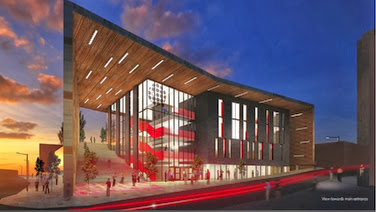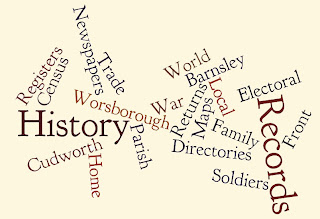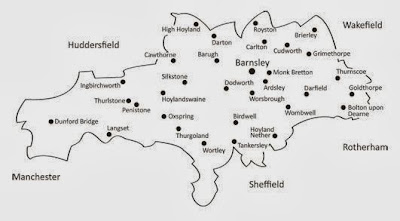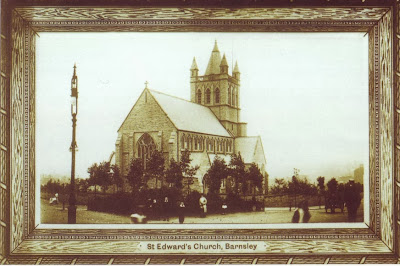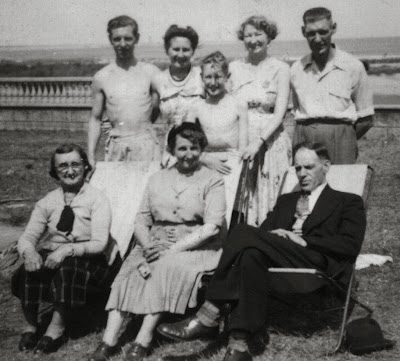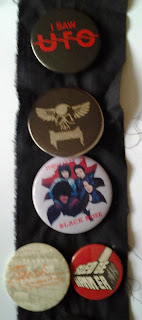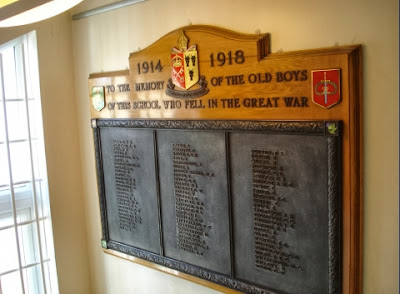 |
| A 1920s map showing part of our photographic expedition (from National Library of Scotland) |
Just look at all the railway stations on this 1920s map, Grimethorpe, Staincross, Notton & Royston and Cudworth's is just off the map at the bottom and Darton (which is the only one remaining) off at the left. No wonder there are so many Station Roads dotted about this area, once upon a time they would have each led to the local railway stations. I can see at least three collieries as well - no make that four, there's a little Colly noted just under Mapplewell. I'm still new to the Barnsley area, I've lived here ten years now but there's still so much to take in and lots and lots of history to find out about. Old maps like the Bartholomew Series on the National Library of Scotland's website are a great way of seeing how places fitted together in the past
I ended up taking 71 photographs in total of five different memorials. They were all the kind which stand in churchyards - I had been able to find good general images online especially on a website that specialises in Second World War research but what I needed was clear photographs of the names and inscriptions on the monuments. Happily the OH didn't mind his quick trip out for a few pictures taking twice as long - and he took some extra photos too, of me taking photos!
 |
| Barnsley Chronicle 7 Aug 1920 |
I found a good piece in the digitised Barnsley Chronicle last week relating the unveiling of the War Memorial at St John's church in Carlton, a small village about three miles north east of Barnsley town centre. The item was published on Friday 7 Aug 1920 and states that the memorial was unveiled the previous Tuesday.
The article records the sentiment that I am finding underlies a lot of the planning for commemoration in Barnsley after the First World War - the community was split as what kind of memorial would be suitable, "At first when the idea was mooted in the village petty jealousies were aroused as to what form the Memorial should take and where it should be erected ..."
I have found that some villages preferred the option of a public park or cottage hospital or homes for disabled soldiers. As I am still only beginning my research it will be interesting to see how many of these alternative proposals were carried through as the standard monumental style of war memorial seems fairly common around the area.
As you can see from the snip above the people of Carlton were won over to the idea of a "magnificent Cruxifix in Carlton Churchyard" and it further claims that "practically every resident in the village - man, woman and child" contributed to the £400 cost. Converting money is always difficult as prices and expectations have changed so much over the years but that is over £8,000 in todays money according to the currency converter on the National Archives website.
 |
| War Memorial at St John's Church, Carlton, Barnsley |
There are already pictures of the Carlton War Memorial and a transcription online on the Genuki website. It has not been my intention to 'reinvent the wheel' at any point in my research, however it is very satisfying to go and actually see a memorial yourself rather than relying on other people's work. Plus I wanted to add the memorial to the War Memorials Online website and I could not do that with someone else's photos.
There are 52 names inscribed on this memorial for men who lost their lives in the First World War and 20 for men from the Second World War. The entry on War Memorials Online has now been created and has a short description of the monument and a list of the all the names.
A branch of the OH's family lived in Carlton at the end of the 19th and beginning of the twentieth centuries. I have been able to link several of the names on this memorial to his family tree - they are not direct ancestors or even great uncles, but they are members of a large extended family. Carlton would have been a very small village or even just a few farms before the pits opened in the middle of the 19th century but hundreds of men arrived there from all over the country, most notably Wales - see a piece in volume 2 of Aspects of Barnsley, pp.49-71, 'Welsh Community in Carlton and Smithies' by Melvyn Jones. It is now almost contiguous with Athersley and Royston, the villages to either side as the green fields between have been filled up with housing estates and a big new school.
In my reading of the Royston book about the First World War, which I wrote about two days ago, I found a mention of a brother in law of the OH's great grandfather who lived in Carlton. It seems to have been taken from the local newspapers so I have a note of the dates and will be looking that up on my next visit to Barnsley Archives! Royston have their own War Memorial and I will be looking at my pictures of that next.



